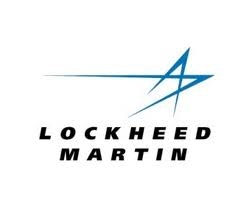
Dividend investing is one of the most popular investing strategies, and for good reasons: academic studies have proven that dividend stocks tend to outperform the markets in the long term, and that´s a big plus in times when investors are feeling uncertain about possible economic scenarios and the best way to manage their portfolios.
But there are different approaches to investing in dividend stocks, and investors need to pay close attention to the singularities of each method since the companies selected, hence the returns obtained, could be dramatically different under the different strategies.
Dividend yield vs. dividend growth
Some dividend investors focus on companies paying big dividend yields, while others choose to invest in those with the best track record of dividend growth. The same goes for dividend focused ETFs: while iShares Dow Jones Select Dividend, for example, invests in high yielding stocks, Vanguard Dividend Appreciation selects companies with a solid history of dividend increases.
This means that DVY has a much higher yield of 3.4% versus a 2.2% yield VIG. At first sight, dividend investors may feel tempted to go for the higher yield and chose DVY. But if we look at total return, dividend plus capital appreciation, VIG has been a better choice over the last years.

This may come as a surprise, but it shouldn´t once we start considering the different holdings of these ETFs. In terms of sectors: DVY is heavily tilted towards utilities, while VIG gives a much higher weight to sectors like consumer, industrials and energy.

Utility companies are great when it comes to producing big and reliable dividend payments, since the business produces notoriously stable cash flows. On the other hand, consumer, industrials and energy may be more volatile, but they also generate better opportunities for growth over time.
Besides, the two ETFs expose investors to different kinds of risks: VIG has more sensitivity to economic activity due to its more cyclical composition, but DVY is more exposed to rising interest rates or increasing inflationary pressures.
Utilities generally operate with high levels of leverage in order to increase returns in a very stable and regulated business, so higher interest costs would be a serious drawback for this ETF and its holdings. Rising inflation could also mean lower profit margins for utilities due to increased energy costs, while VIG is better positioned for that scenario with a bigger proportion in energy stocks.
Individual names
Looking at the 10 biggest individual names in these ETFs, the difference in quality is remarkable. A high dividend yield simply means a cheap valuation, and there is usually a reason why a company is trading at bargain levels.

The biggest position in the DVY portfolio is Lorillard Inc. (NYSE:LO), which pays a smoking hot dividend yield of 5.6%. Given this ultra low valuation, the risks may already be reflected in the stock price, but the tobacco business means enormous regulatory risks and all the uncertainty coming from changing consumer habits and falling cigarette demand in countries like the US. Lorillard Inc. (NYSE:LO) is financially strong to continue paying its dividends in the middle term, but on a long term horizon there is some real uncertainty regarding the company´s future.
The second largest position is Lockheed Martin Corporation (NYSE:LMT), which yields a big fat 5.1% in dividends. As tempting as this yield may be, defense contractors are particularly vulnerable to defense cuts in the current political environment, and middle terms perspective for companies in this sector are especially uncertain. Just like in the case of Lorillard Inc. (NYSE:LO), the risks may be more than compensated by current valuations, but this still doesn´t change the fact that many of these high yield companies usually carry some above average risk exposure.
On the other hand, the biggest position in VIG is Wal-Mart Stores, Inc. (NYSE:WMT), which pays a comparatively modest dividend yield of 2.6%. This is well below the yields observed in many of the DVY holdings, but Wal-Mart Stores, Inc. (NYSE:WMT) has consecutively increased its dividends in each of the last 39 years. This gigantic discount retailer is not immune to competition or economic fluctuations, but it has enough scale and purchasing power to remain a price leader in many retail categories, and that´s a very strong competitive advantage generating growing cash flows over time.
In fact, when looking at the rest of the VIG portfolio we find many of the strongest and most recognizable global corporations in the world, names like The Coca-Cola Company (NYSE:KO), Exxon Mobil Corporation (NYSE:XOM), The Procter & Gamble Company (NYSE:PG) and International Business Machines Corp. (NYSE:IBM) to name a few. This shouldn´t come as a surprise, sustained dividend growth over long periods of time is a reflection of high quality fundamentals and strong competitive advantages.
Companies which have been able to raise their dividends year after year under different economic conditions have proven to investors that their strong enough to generate growing cash flows through good and bad times, and this financial resiliency is usually a great sign about the fundamental quality of these businesses.
Bottom line
High dividend yields can be very tempting, and many investors intuitively jump into these kinds of companies in their search for the best opportunities in the market. But there is much more to dividend investing that yields, and companies with a solid track record of dividend growth are usually some of the best businesses in the planet. From a total return point of view, dividend growth investing can be a better idea than simply shopping for the highest yields around.
The article The Best Approach to Dividend Investing originally appeared on Fool.com.
Copyright © 1995 – 2013 The Motley Fool, LLC. All rights reserved. The Motley Fool has a disclosure policy.